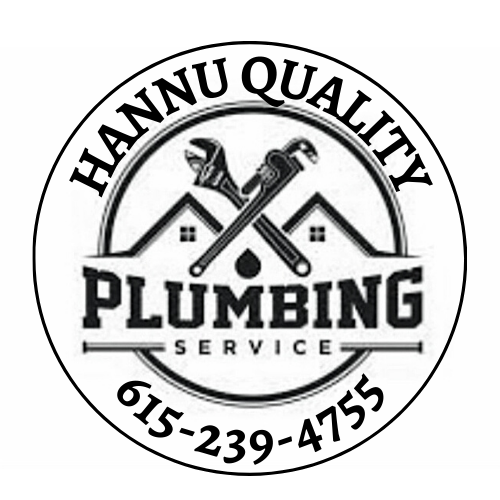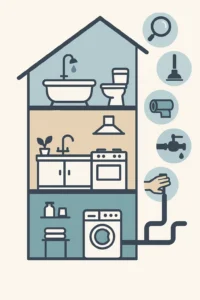As sustainability becomes increasingly important, eco-friendly plumbing solutions offer homeowners a practical way to lower utility bills and protect the environment. Eco-friendly plumbing practices help you reduce water waste and create a healthier home for you and your family.
Below, we’ll explore seven essential ways to improve your plumbing system’s sustainability, including sustainable plumbing, energy efficient plumbing, and green plumbing practices. Let’s dive in!
Upgrade to Low-Flow Fixtures
One of the simplest and most effective eco-friendly plumbing upgrades you can make is to install low-flow fixtures. These include low-flow showerheads, faucets, and toilets. By reducing the amount of water that flows through these fixtures, you can dramatically cut down on water usage without sacrificing comfort or performance.
Benefits of Low-Flow Fixtures
- Reduce water consumption by up to 50%
- Lower water bills immediately
- Enhance your home’s overall efficiency
Low-flow fixtures are a hallmark of sustainable plumbing and are designed to meet your household needs while minimizing environmental impact. You’ll notice a reduction in your water bill almost immediately after installation, making them a wise investment for both your wallet and the planet.
Fix Leaks Promptly
Even small leaks can waste thousands of gallons of water every year. Leaky faucets, toilets, and pipes not only cost you money but also strain local water resources. Energy efficient plumbing involves regular inspections to identify and repair leaks before they become larger problems.
How to Identify Leaks
- Check for damp spots or water stains on walls and ceilings
- Listen for the sound of running water when fixtures are off
- Monitor your water bill for unexpected increases
Regular maintenance and prompt leak repairs are core parts of green plumbing practices that conserve water and lower your utility costs.
Insulate Pipes and Use Tankless Water Heaters
Another essential eco-friendly plumbing strategy is to insulate your pipes. Pipe insulation helps to reduce heat loss, making your water heater more efficient and reducing energy consumption. This practice is particularly important during the winter months when pipes are more prone to freezing.
Advantages of Pipe Insulation
- Prevents heat loss
- Lowers energy bills
- Extends the life of your plumbing system
Consider upgrading to a tankless water heater, which heats water only when you need it instead of keeping a large tank of water hot all day. This reduces both energy usage and your carbon footprint, making it a key element of sustainable plumbing.
For more on sustainable plumbing, visit our Sustainable plumbing resource.
Recycle and Reuse Greywater
Greywater recycling systems capture water from sinks, showers, and washing machines and treat it for reuse in irrigation and toilet flushing. This innovative approach to eco-friendly plumbing dramatically reduces the amount of fresh water used in your home.
Key Benefits of Greywater Systems
- Save thousands of gallons of freshwater annually
- Lower your water bills
- Support green plumbing practices for a healthier planet
Installing a greywater system may require the help of a professional plumber to ensure it meets local building codes and safety standards. At Hannu Quality Plumbing, our experts can help you design and install a greywater recycling system that maximizes water savings and meets your household’s needs.
Install a Rainwater Harvesting System
A rainwater harvesting system collects and stores rainwater for household use. This green plumbing practice can be as simple as a rain barrel or as advanced as a fully integrated system that filters and pressurizes the water for indoor use.
Benefits of Rainwater Harvesting
- Reduces demand on municipal water supplies
- Provides a free, natural water source
- Supports sustainable plumbing practices
By using rainwater for irrigation, laundry, or even flushing toilets, you’ll save money and reduce your reliance on municipal water supplies. This type of system embodies sustainable plumbing and is an excellent investment for environmentally conscious homeowners.
To learn more about the ethics of water usage and eco-friendly plumbing, check out this ECo friendly plumbing article.
Choose Eco-Friendly Plumbing Materials
The materials you choose for your plumbing system also play a critical role in sustainability. Using PEX or copper pipes instead of PVC can reduce the environmental impact of your plumbing system. These materials are more durable and less likely to leach harmful chemicals into your water supply.
Why Eco-Friendly Materials Matter
- Lower your home’s carbon footprint
- Enhance durability and reduce waste
- Promote healthier water quality
Incorporating these green plumbing practices not only protects your family’s health but also ensures that your plumbing system has a smaller environmental footprint. Choosing materials that support energy efficient plumbing aligns your home with the best eco-friendly standards.
Partner with an Eco-Conscious Plumbing Company
Finally, working with a plumbing company that prioritizes eco-friendly plumbing can ensure that all aspects of your system are as sustainable as possible. At Hannu Quality Plumbing, we specialize in sustainable plumbing solutions that lower your utility bills and promote environmental stewardship.
Our Eco-Friendly Plumbing Services Include:
- Water-saving fixture installations
- Leak detection and repairs
- Greywater and rainwater systems
- Pipe insulation and tankless water heater installations
We’ll help you assess your current plumbing system, recommend upgrades, and implement green plumbing practices that work for your lifestyle and budget. Together, we can make your home more efficient and eco-friendly.
Conclusion
By implementing these eco-friendly plumbing strategies, you’ll not only save water and energy but also reduce your utility bills and contribute to a healthier environment. Whether it’s installing low-flow fixtures, fixing leaks, or embracing green plumbing practices, there are countless ways to make your home’s plumbing system more sustainable.
Ready to make the switch to eco-friendly plumbing? Contact Hannu Quality Plumbing today to learn how we can help you create a more sustainable and efficient plumbing system.
FAQs About Eco-Friendly Plumbing
Q1: What are the main benefits of eco-friendly plumbing?
A1: Eco-friendly plumbing saves water, reduces energy consumption, lowers utility bills, and minimizes environmental impact.
Q2: Is it expensive to install sustainable plumbing fixtures?
A2: While there may be an upfront cost, sustainable plumbing fixtures typically pay for themselves through reduced water and energy bills over time.
Q3: How can I find eco-friendly plumbing materials?
A3: Talk to a professional plumber or visit eco-conscious home improvement stores to source environmentally responsible plumbing materials.
Q4: Can I retrofit my current system to be more sustainable?
A4: Yes! Many eco-friendly plumbing upgrades can be retrofitted to existing systems, including low-flow fixtures and pipe insulation.
Q5: What does a rainwater harvesting system involve?
A5: Rainwater harvesting systems collect and store rainwater, which can be used for irrigation, laundry, and more, depending on the system’s complexity.


